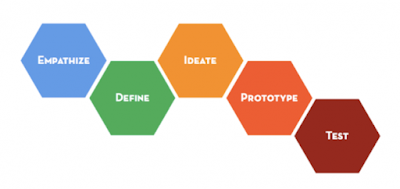 |
by Kent Aitken |      |
This isn't a thorough exploration of slack's role in organizations, just a few things that were on my mind recently. Would love to hear your thoughts.
I've been living in Ottawa for seven years, while most of my family lives on the east coast. My mom's side of my family usually has a mid-summer and a Christmas get-together each year, and I haven't made it back east for either in years. It eats at me. It'd be worth my while, but every year I run quickly into the limits of my vacation days and travel budget, especially when it's a given that I'll be going back to PEI to visit my dad, and Newfoundland to visit my farthest-flung brother.
But first, an aside
I've been living in Ottawa for seven years, while most of my family lives on the east coast. My mom's side of my family usually has a mid-summer and a Christmas get-together each year, and I haven't made it back east for either in years. It eats at me. It'd be worth my while, but every year I run quickly into the limits of my vacation days and travel budget, especially when it's a given that I'll be going back to PEI to visit my dad, and Newfoundland to visit my farthest-flung brother.
This has been a powerful dynamic in my life for the last half-decade. Every time I book a trip I'm both excited and conflicted, aware that I'm making tradeoffs, aware that some people - that I think very highly of - will go unvisited in a given year.
Collaboration and relationship-building (or, policy and communications, and never the twain shall meet)
To segue somewhat: last week a speaker was asking where the communications people were at a public administration conference. Some people pointed to general tension or misunderstanding between the two worlds, and I threw in a more functional reason, analogous to the above story. We are, as they say, in "an era of fiscal restraint," with tight scrutiny on travel, conference, and training budgets. We all understand that the lines between fields such as policy and communications are blurring, that there are inter-dependencies, and that collaboration is incredibly important. But for an given practitioner, staying informed about their field is still the primary concern, and they're naturally going to maintain relationships with their core community first.
Economically, it's like an artificial cultural ceiling on the supply and demand of public servant relationship-building and collaboration. The question is whether that ceiling is appropriately set in pursuit of broader system goals.
It has become en vogue to ask about communities and conferences, "Who else needs to be here? Who else should we be talking to?" Which is a good question, but if you can't get to their communities, and your community is a few bullets down the priority list for them, it's impractical to expect anyone to bridge that gap.
Creating slack, in this case, would be treating relationship-building with core communities as a given - creating room on the margins to better understand the peripheral players that influence our portfolios.
Innovation
Google's 20% innovation time doesn't work for everyone. We were all excited about it five years ago, but if it doesn't square with culture, if innovation isn't actually a core goal (which is often appropriate), or if your work doesn't progress through that style of idea generation, it's a silver bullet with no gun and no werewolves.
Since, we've matured in our debate about free time and innovation. Is it slack in the system that generates innovation? Or pressure? It's hard to say, and the only true answer is probably "it depends". However, a recent research paper adds an interesting thesis to the debate (h/t). The short version of the paper: school breaks lead to a sharp increase in Kickstarter ideas being launched and funded because it creates time for mundane tasks.
Their conclusion is that slack time does indeed lead to innovation, but not for the reasons we thought. Instead of allowing creativity and the generation of ideas, slack time allows people the time to execute and move their ideas forward.
However, many public administrators opt for the pressure approach, or are limited to it as an option. In an age of "do better with less", I've seen a worrying trend of people being forced to rush the "better." These are ideas that might work, given the time to do it right. But when people are asked to Innovate right now!, pressure gets the better of rigour.
Slack
Slack, as it's traditionally regarded, is expensive. However, it seems probable that it's often worth it, albeit in hard-to-measure ways. If that's true, we have two options: create slack, or re-define activities like relationship-building, idea-sharing, focus-grouping, assumption-testing, and the like — those intangibles often first in line for the chopping block — as part of the job description, as part of the ongoing pressure.


